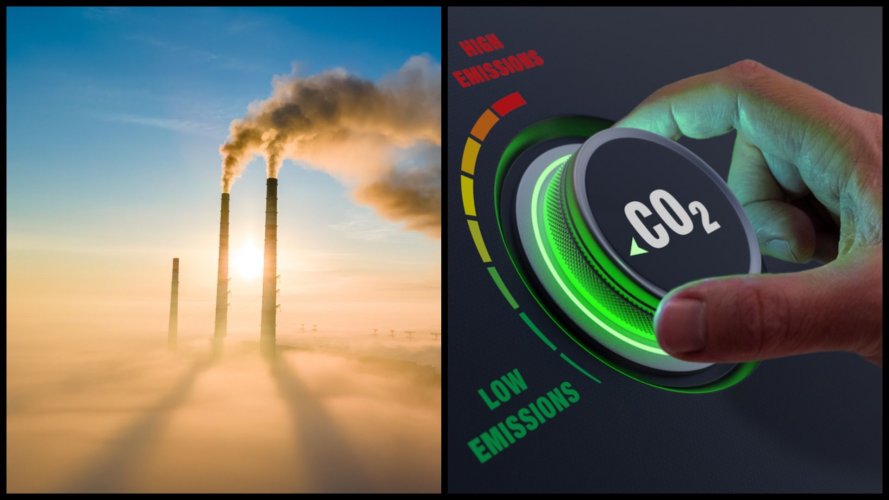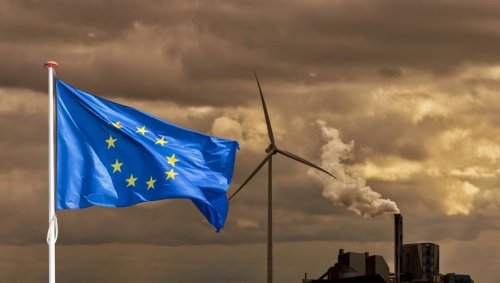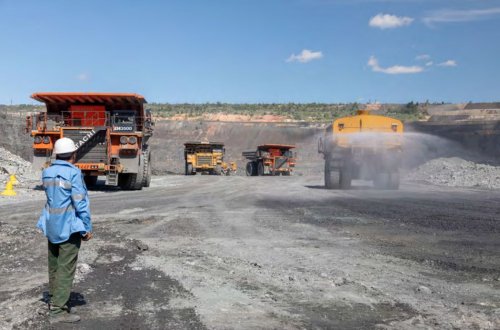From January 1, 2024, the State Fund for Decarbonization and Energy-Efficient Transformation will become operational in Ukraine. The corresponding bill No. 8433, which provides for the creation of this Fund, was signed by the President the other day. The fund will be filled with eco-taxes paid for emissions of carbon into the atmosphere from stationary sources of pollution. According to the State Energy Efficiency Agency, such targeted use of the eco-tax is provided for in the 21st EU country.
But did we really take into account advanced European practices and what are the risks of this idea – EcoPolitic investigated.
How do decarbonization funds work in the EU?
In the European Union, the system of financing decarbonization processes has two levels. The first is funding directly from the EU through the Innovation Fund or grants. And the second – national funds, or individual projects, grants of executive authorities of European countries.
The Innovation Fund is one of the world's largest financing systems for innovative low-carbon technologies and a key element of financing the general economic obligations of the EU under the Paris Agreement. The fund is the successor to the NER300 program.
Its stated goal is to help businesses operating in the European Union to invest in clean energy and industry to accelerate economic growth, create future-ready local jobs and strengthen European technological leadership on a global scale.
This fund is filled with funds received from the system of trading quotas for greenhouse gas emissions. As reported on the website of the European Commission, in the period 2020-2030, the Fund can potentially receive approximately 38 billion euros, depending on the price of carbon (calculated at 75 euros/t CO2). Therefore, he will be able to finance projects for approximately the same amount.
Once a year, the EU Innovation Fund holds competitions for large and small projects that offer breakthrough solutions that have not been used before.
The best ideas receive funding in the following areas:
- introduction of low-carbon technologies in energy-intensive industries;
- creation of a system of absorption and further use of carbon;
- innovative production of renewable energy;
- energy storage.
Importantly, the fund focuses on projects that offer not just a point solution to a problem, but can become a model for other companies to follow in the future.
Thanks to significant amounts of funding, the fund can support rather large-scale and costly initiatives. In the summer of 2022, as part of the second competitive selection, the fund allocated 1.8 billion euros for 18 innovative projects.
Among them, for example, Air is a joint project of the Swedish chemical company Perstorp, the utility company Fortum and the company Uniper Sydkraft. It won funding to produce sustainable methanol from CO2 (up to 200,000 tons per year), renewable hydrogen and biogas.
Another large-scale project is HySkies, created in partnership with Shell, Swedish energy company Vattenfall and biojet engine manufacturer Lanzajet. It is planned to produce synthetic environmentally friendly aviation fuel and install a carbon capture system at the plant.
Some EU countries also have their own decarbonization funds, somewhat similar to the Ukrainian one. However, they operate on different bases depending on the country. They are financed somewhere with the money from the eco-tax, somewhere with the money received from the sale of emission quotas, but mostly by pan-European trust funds. Such funds work with various types of both small and large businesses. Let's consider some of them.
Germany
Here, the issue of decarbonization is dealt with by the Climate and Transformation Fund (CTF), which is financed by pan-European funds and national revenues for carbon emissions.
Between 2023 and 2026, the federal government plans to spend €177.5 billion on measures to mitigate climate change and transform the German economy. Expenditures for 2023 amount to 35.4 billion euros.
The main part of the costs will go to finance climate renovation of buildings. But in addition, compensations for the installation of renewable energy installations are also provided for; funding programs to upgrade coal-fired power plants to use gas so they can then run on green hydrogen; financing of efficient, environmentally friendly heat supply networks; grants for the purchase of exclusively electric and fuel cell vehicles.
Spain
In Spain, the FES-CO2 Carbon Fund operates, which is financed, in particular, by revenues from the sale of greenhouse gas emissions rights.
The fund offers support to the private sector for low-carbon activities and contributes to the creation of an investment climate necessary for the development of clean technologies. According to the foundation's page, it has ensured the viability of clean technologies in the country by financing their development and dissemination.
France
In France, there are as many as three funds that work to reduce climate impacts. Among them are the Closed Cycle Economy Fund, the Heat Fund and the Industrial Decarbonization Fund.
The Industrial Decarbonization Fund deals with industrial investments in energy efficiency, electrification and adaptation of processes to reduce CO2 emissions. The fund receives funds within the framework of the French Recovery Plan, which is financed by the European Union.
As we mentioned above, financing of decarbonization projects can also be done through individual grants. For example, in late February, the European Commission approved a €460 million grant to ArcelorMittal from the Spanish government to build a €1 billion direct iron recovery (DRI) plant at the company's Gijón plant in the north of the country. Along with the electric arc furnace, the DRI plant will replace one of the blast furnaces and allow natural gas to be phased out of the production process, the European Commission said. The plant is expected to start operating by the end of 2025 and produce 2.3 million tons of DRI per year. This will make it possible to reduce a total of 70.9 million tons of CO2 emissions.
At the same time, a €55 million grant was approved to support the construction of ArcelorMittal's German green steel plant. This demonstration plant in Hamburg will use renewable hydrogen, avoiding more than 700,000 tons of carbon emissions. The plant is expected to have an annual capacity of 100,000 tons of direct reduction pig iron, a key raw material for steel production. It will start working in 2026.
Another example. In early March, leading German steelmaker ThyssenKrupp Steel signed a contract with technology company SMS group to build a direct reduction iron (DRI) plant that can run on hydrogen. It is planned that the plant with a capacity of 2.5 million tons of DRI per year will be put into operation at the end of 2026. Its estimated cost is €1.8 billion. While the company is waiting for approval of a grant from the EU, it has already received assurances of financial support from the German government.
In general, regardless of the country, the sale of quotas and taxes make up only a small share of the financing of funds and decarbonization projects. Their main funds are grant support from the EU. The key recipients of this support in the EU are green energy projects and the steel industry – as basic sectors of the economy.
How will the Ukrainian Decarbonization Fund work?
The provision on the Decarbonization Fund was included in draft law No. 8433 "On amendments to chapter VI "Final and Transitional Provisions" of the budget code of Ukraine regarding the use of funds from accounts for the support of Ukraine." Other documents regarding the activities of the fund have not been approved at the moment.
As noted in the press service of the Ministry of Development of Communities, Territories and Infrastructure of Ukraine, the Fund will be filled at the expense of the ecological tax on CO2 emissions, which will primarily be paid by large industrial enterprises. Before the creation of this fund, the tax on carbon emissions was directed to the general fund of the budget.
According to the head of the ministry Oleksandr Kubrakov, the funds accumulated by the Fund will, among other things, be aimed at increasing the use of renewable energy sources and alternative fuels and reducing carbon emissions.
"The creation of the Fund for decarbonization and energy-efficient transformation is a signal to international partners that our country is developing according to European principles. In particular, this concerns the reduction of CO2 emissions and investments in energy efficiency. Such steps will provide an opportunity for the recovery of the Ukrainian economy and the development of communities," Oleksandr Kubrakov is quoted by the press service of the Ministry.
What is the situation with the financing of the Decarbonization Fund?
European funds and national governments are helping to modernize well-known industrial giants. Will the Ukrainian Decarbonization Fund be able to afford it?
If in some EU countries the tax on carbon emissions reaches €80 and even €147, as, for example, in Sweden. In Ukraine in 2023, it is UAH 30 per ton of CO2. However, in the end, this tax allows you to accumulate quite a lot of money. For example, for January-November 2021, Ukrainian enterprises paid UAH 1.2 billion. But unfortunately, unlike the common practice in the EU, all this money goes not to the eco-modernization of industry, but to the general fund of the state budget, and only a part of it is used sparingly as at the regional level.
At the same time, it is worth understanding that the tax cannot be the main source of funding for the Decarbonization Fund. According to official data, it is planned to attract international loans and grants to fill it. According to PAEU Vice President Vladyslav Antipov, the Ukrainian government is already negotiating with many global climate funds to attract funds for the decarbonization of our economy, and the partners are well aware that Ukraine has significant potential in this direction.
The government has not yet reported on specific agreements, but if they are formed, large-scale projects for the Ukrainian Decarbonization Fund will also become a reality.
What are the risks of the newly created Fund?
According to Vladyslav Antipov, the main risk for the Fund at the moment is that its funds will not be directed to real projects on decarbonization and energy efficiency.
"It very often happens in our country that the procedure for using funds from the state fund is prescribed in such a way that it is practically impossible to use them. As a result, anyone who approves any decision regarding the allocation of money from the fund potentially becomes a "client" of NABU. Another threat, on the contrary, is in the fact that the procedure for using the funds of the state fund will allow the financing of only numerous useless studies through the pocket firms of corrupt people. Today, our country solves many problems in the field of public administration more effectively than some European and North American countries. It is simply necessary not to give unscrupulous officials to turn a good idea into another corruption "feeder", Antipov concludes.
***
During the last year of the war, Ukraine radically reduced CO2 emissions into the atmosphere. But this happened not due to a successful environmental policy and modernization of enterprises, but due to a drop in production: some enterprises could not work at full capacity due to power outages as a result of Russian attacks, and most of them were destroyed altogether. Therefore, the activities of the Fund should be focused on attracting and supporting green investments in new energy and industry.
In the process of discussing the future restoration of Ukrainian industry, the interested parties agree that there is no way to restore industrial assets as they were – it is necessary to use the most modern advanced technologies. Industry must be restored on the principles of green transformation. This will help us create a modern, competitive, strong economy that will not catch up with world processes, but develop in unison with the leading economies of Europe and the world. Contributing to the formation of such an economy should be the main task of the newly created Decarbonization Fund.





